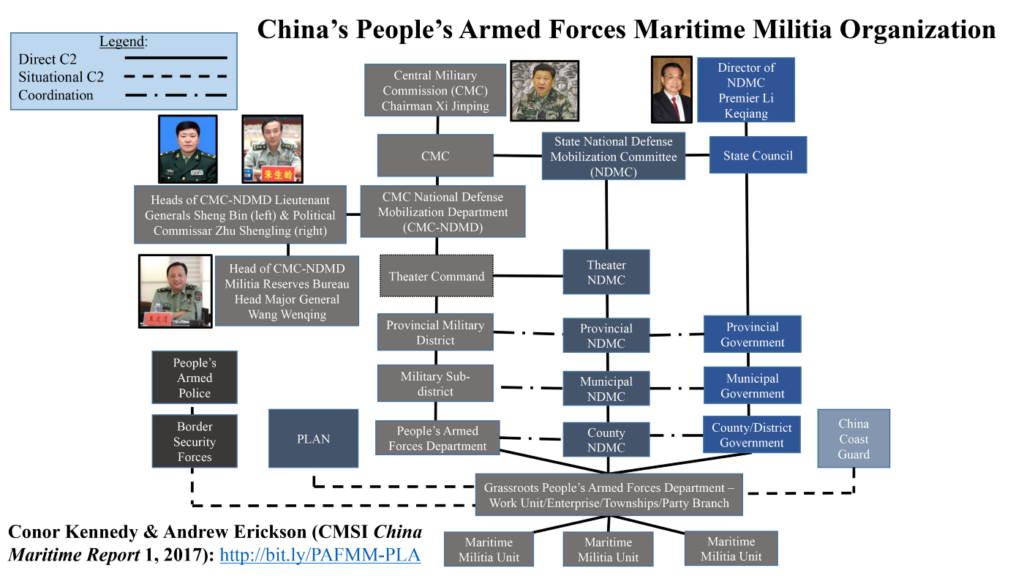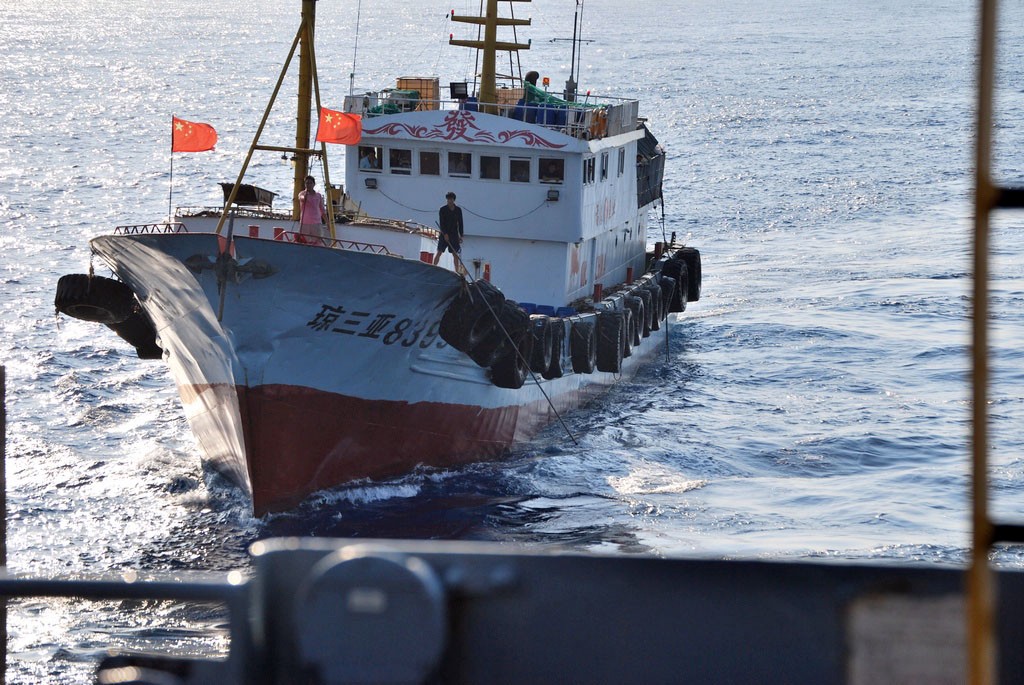Andrew S. Erickson, professor at the U.S. Naval War College’s China Maritime Studies Institute (CMSI) and Fairbank Center Associate in Research, outlines China’s evolving maritime security forces.
China’s Armed Forces are composed of three major organizations, each of which has a maritime subcomponent. The People’s Liberation Army (PLA) contains the PLA Navy (PLAN); the People’s Armed Police, which increasingly leads China’s Maritime Law Enforcement (MLE) forces, including the China Coast Guard; and the Militia, which contains a growing proportion of sea-based units, the People’s Armed Forces Maritime Militia (PAFMM). Each of China’s three sea forces is the world’s largest of its type.

First, China has the world’s largest navy. The U.S. Naval War College’s CMSI analyzed China’s fleet force development in its previous conference volume, Chinese Naval Shipbuilding. The PLAN currently has slightly over 300 vessels; by 2020, the U.S. Office of Naval Intelligence forecasts that it will have 313–342 warships. According to its official website, as of September 2017 the U.S. Navy has 277 “deployable battle force ships.” While Chinese warships lag behind their American counterparts in individual capabilities — a “mandarin oranges to apples” comparison — numbers matter significantly when it comes to maintaining presence and influence in vital seas.
Second, China has the world’s largest coast guard by a sizable margin. Today, China’s Coast Guard has 225 ships over 500 tons capable of operating offshore, and another 1,050+ confined to closer waters, for a total of over 1,275 ships: more hulls than the coast guards of all its regional neighbors combined. China has two of the world’s largest coast guard ships (10,000+ tons full load). In 2020, China’s Coast Guard is projected to have a total of 1,300+ ships: 260 large vessels capable of operating offshore, many capable of operating worldwide; and another 1,050+ smaller vessels confined to closer waters.
Third, China has the world’s largest maritime militia, and virtually the only one charged with involvement in sovereignty disputes. Only Vietnam is known to have a similar force with a similar mission. China’s PAFMM is a set of mariners and their vessels which are trained, equipped, and organized directly by the PLA’s local military commands. While at sea, these units typically answer to the PLA chain of command, and are certain to do so when activated for missions. While most militiamen have civilian jobs, new units are emerging that appear to employ elite forces full-time as militarized professionals.

Leading elements of China’s Maritime Militia have already played frontline roles in manifold Chinese incidents and skirmishes with foreign mariners throughout the South China Sea. PAFMM forces were directly involved in China’s harassment of USNS Impeccable in 2009, seizure of Scarborough Shoal from the Philippines in 2012, blockade of Manila’s outpost on Second Thomas Shoal in 2014, and confrontation with Vietnam over oil drilling platform HYSY-981 in 2014. Directed PAFMM participation in such international sea incidents or provocations has occurred under the PLA chain of command, and sometimes also under the temporary command of Chinese Maritime Law Enforcement (MLE).

As an official component of China’s armed forces, this third Chinese sea force is a critical enabler for China’s prosecution of “gray zone” operations to increase Chinese control over the East and South China Seas through coercion short of escalation to war. In the East and South China Seas, together with China’s Coast Guard, PAFMM can engage in entire levels of finely-calibrated escalation that the U.S. could find difficult to match. Most regional U.S. allies and partners cannot operate fully at those levels either, much less match Chinese forces therein.
Focused primarily on its contested maritime periphery, China’s three sea forces offer an increasingly well-coordinated means for Beijing to pursue its unresolved sovereignty claims and other vital interests. The U.S. Navy, by contrast, is globally dispersed. In a marked contrast to America’s military-focused shipbuilding industry, in China a strong commercial shipbuilding industry subsidizes overhead costs for construction of all three types of vessels. That explains in part how China has been able to build and modernize all three forces so expeditiously. And, if it chose to do so, China could rapidly and massively expand production of ships for all three of its sea forces.
Andrew S. Erickson is the first recipient of the U.S. Naval War College’s new peer-nominated college-wide award for research. The award recognizes his research on China’s People’s Armed Forces Maritime Militia (PAFMM) over the past three years with CMSI research associate Conor Kennedy.
To read more by Professor Andrew S. Erickson, check out his China research website at www.andrewerickson.com.


